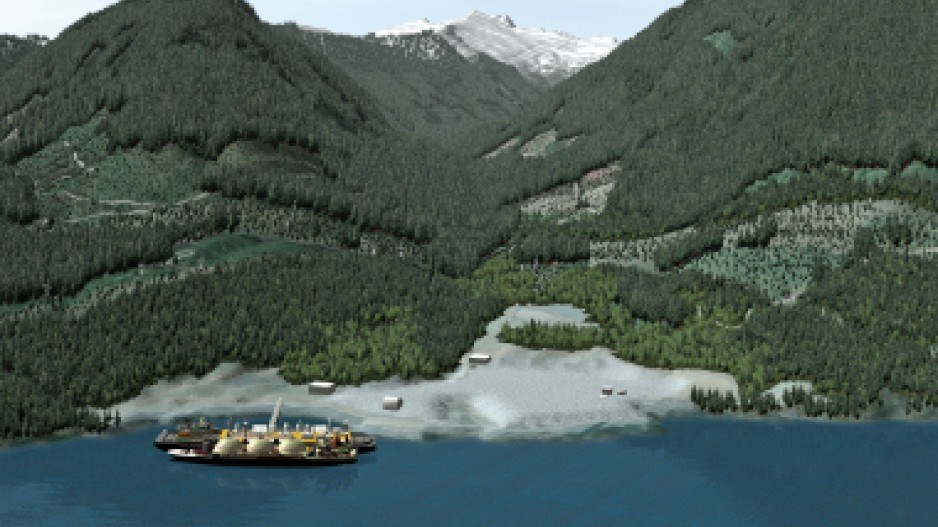The proponents of the Woodfibre liquefied natural gas (LNG) plant have rejigged the project from one based offshore to one located onshore.
Woodfibre Natural Gas officials announced June 11 the $1.7-billion LNG liquefaction plant would be built on the former Woodfibre pulp mill site along the shores of Howe Sound, rather than out in the water — a possibility suggested in original designs. Natural gas storage for the facility will remain offshore.
After examining public consultation from meetings last February, proponents highlighted three concerns regarding the original plan, Woodfibre Natural Gas vice president Byng Giraud said.
Noise from the liquefaction facility topped the list, he said.
People were worried about its possible impacts on marine life. Residents also said building the facility onshore may provide more construction jobs, Giraud noted.
“Our engineer determined that the cost of moving the facility to land won’t be that significant,” he said.
The move is a small step forward, Whistler-based international LNG development expert Zoher Meratla said.
The former design comes with its own set of challenges, he said.
The facility’s connections could have been weaker than those on land, as the facility would have to factor in the ocean’s movement, he said.
Woodfibre’s plans still place the natural gas in former LNG freighters repurposed for storage, he noted, something he would like to see altered.
“This is fairly unique,” Meratla said of the project.
Meratla said he thinks that if an LNG plant is being built, it should be located onshore.
It is easier to manage an LNG spill on land than on the water, he said. Most facilities corral spilled gas into a containment area where the vapour can be controlled, he said.
“On the water you have no control over that,” he said.
Whether a spill is on land or on water the gas still evaporates, Giraud said.
“Storage on water is much more common,” he said.
The project, which would see up to 2.1 million tonnes of LNG shipped from the Squamish facility beginning as early as 2017, is undergoing a blended federal-provincial environmental review. If it receives certification, the parent company, Singapore-based Pacific Oil and Gas, is slated to decide in the first half of 2015 whether to proceed with the project.




